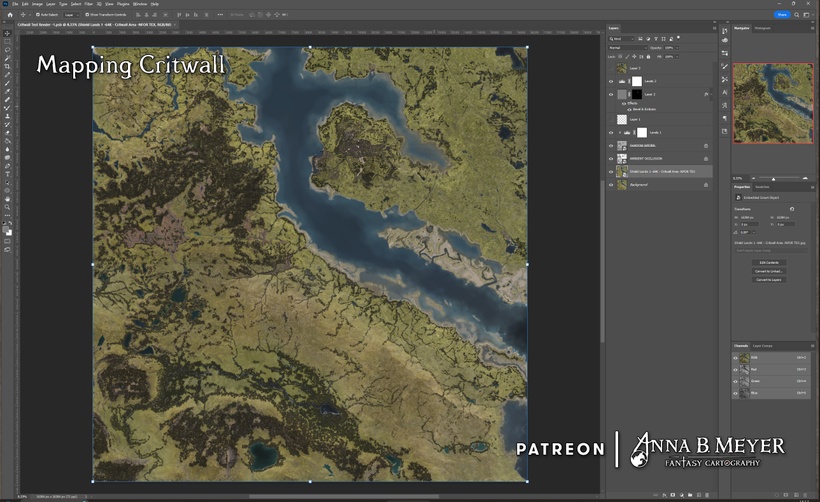
It has taken 20 years of hesitation, half-assed attempts, a few fast made commissions and lots of trials and error, to get this point where I have found out how to create city maps that are both useful and pleasing to my eye. Please understand me wrong here, fantasy cartography are full of fantastic looking city maps. After dungeon maps they are probably the most common type of map in TTRPG publishing, and despite looking great they often missing key parts I'm looking for in visualizing a settlement.


May main missing feature are the surroundings, a city is a feature of the surrounding landscape, a landscape that are usually the reason for its existence and determines its layout and spread, omitting it makes it really hard for me to understand the place. Another vital part are elevation, a settlement on flat lands are fundamentally different from one with huge height differences. A proper map need to make this apparent, strangely this can be harder to do well when the elevation differences are smaller but still significant.

Level of detail is another key aspect of a map, especially for a place where text and images are the only way we can get to know the place. Fantasy mapping are less about finding the way and more about discovering the journey. At a distance things like color and shading give away clues to the lay of the land, big structures like city walls and the biggest buildings. Contrasting colors between buildings and streets work to give hints to the basic layout of the city even at a glance from the distance. Porta Potty Scale works well to show an overview of settlements and their surroundings, and to use to navigate around town, point out places of interest and calculate travel times.

The final map and its data need to fit into my grander scheme of setting mapping, both in accuracy, data compatibility, and style. The data bit is the often overlooked part, I want to be able to re-use as much of my work as possible, and when I update something the update should be applicable across all maps using the the same data. Good maps are so much more than pretty pictures. All the separate layers of textures, shading, masks and things like occlusion data can be very handy when it comes to make different types of maps, like a grey overlay to show the sewers for example.




I've used my trusty World Machine, Photoshop workflow for this one and I'm starting to feel comfortable with both the process and the results. It is tedious and even "treacherous" at time with many pitfalls, but overall the best possible at the moment. There are a few things with large scale water drainage that I need to iron out, but I have ideas on how to fix them better. Who knew that drainage would be such a big part of my life, I never even though much about it until I started moving into virtual terrain creation, and now I study both geology and python to get a grip on the topic!

Half of the process still requires a hands on approach using Photoshop, this is both a pain but also a source of artistry and a chance to get to know an area intimately. It is also important for me to have lots of hands on in in the city design process, things need to be figured out gradually with a tow step forward one step back kind of way. Trying to imagine what the place would be to live in, when and how was it constructed, by whom and who made the decisions. Towns and settlements rarely form instantly, but it might happen in a fantasy world, they grow over time and their history are an integral part of how they are designed. Taking time to let all this evolve when I work on settlements makes it possible to come up with lots of cool little details.

Next phase in mapping Critwall is to bring it into QGIS for labeling, which is something I'm very much still a newbie at. The final presentation represent a whole new set of challenges with, fonts, size colors and more. More on that in a few days...